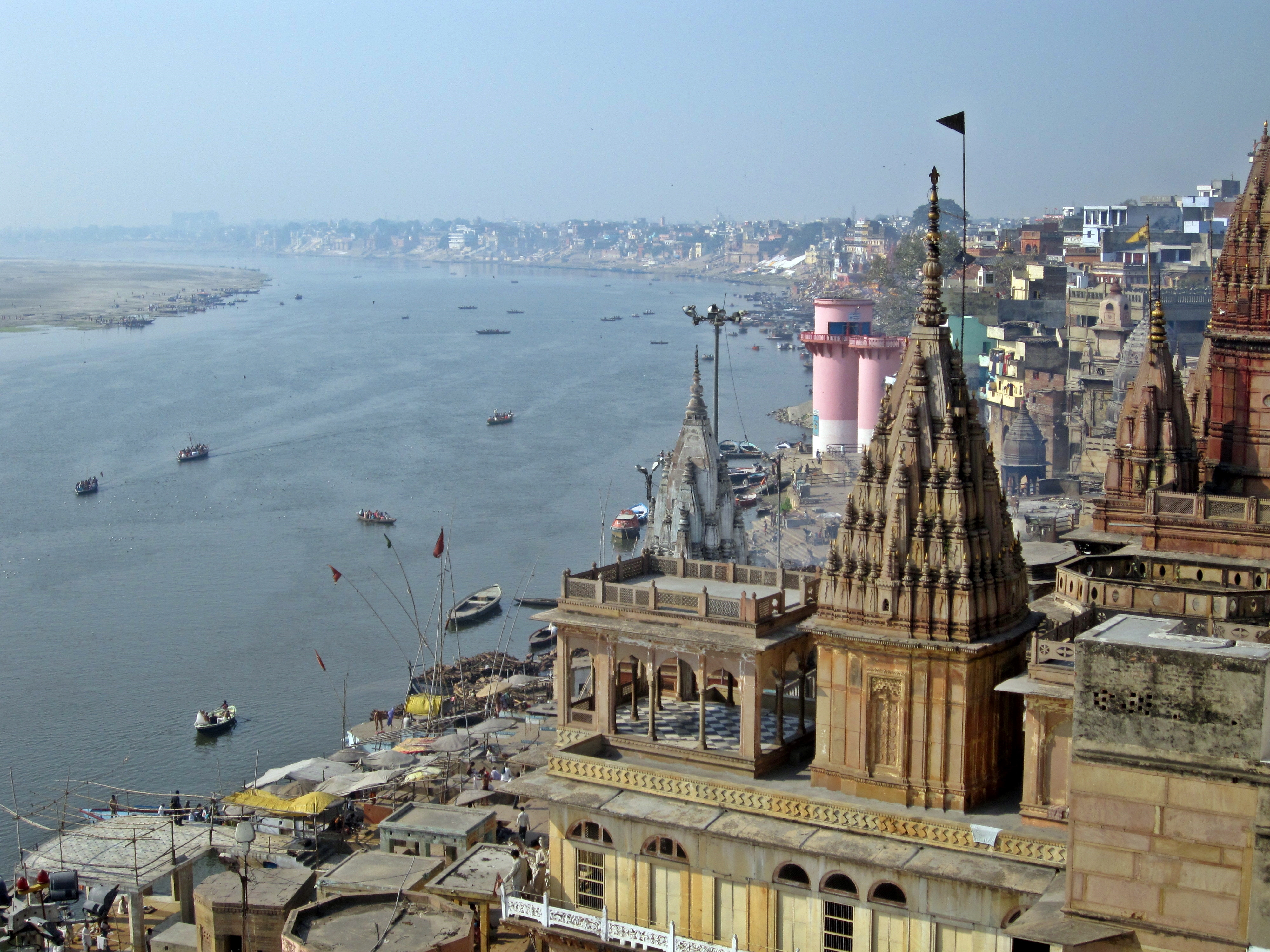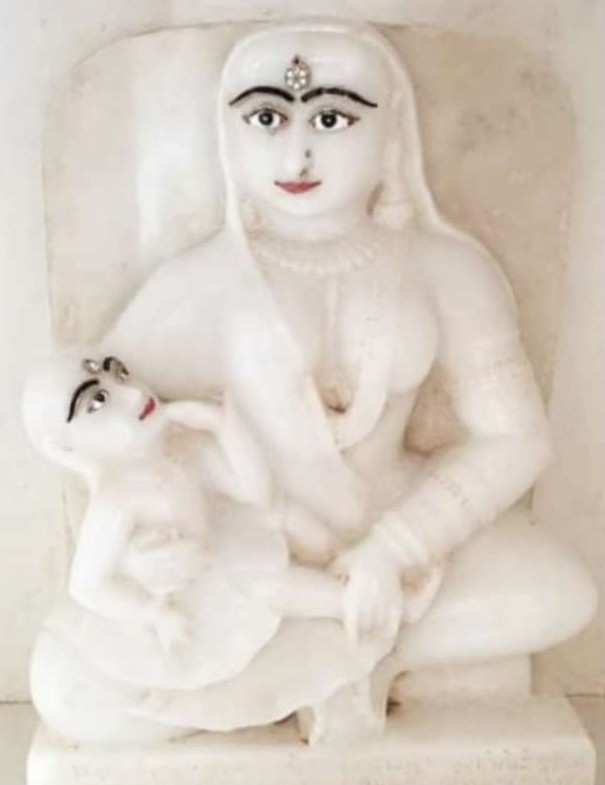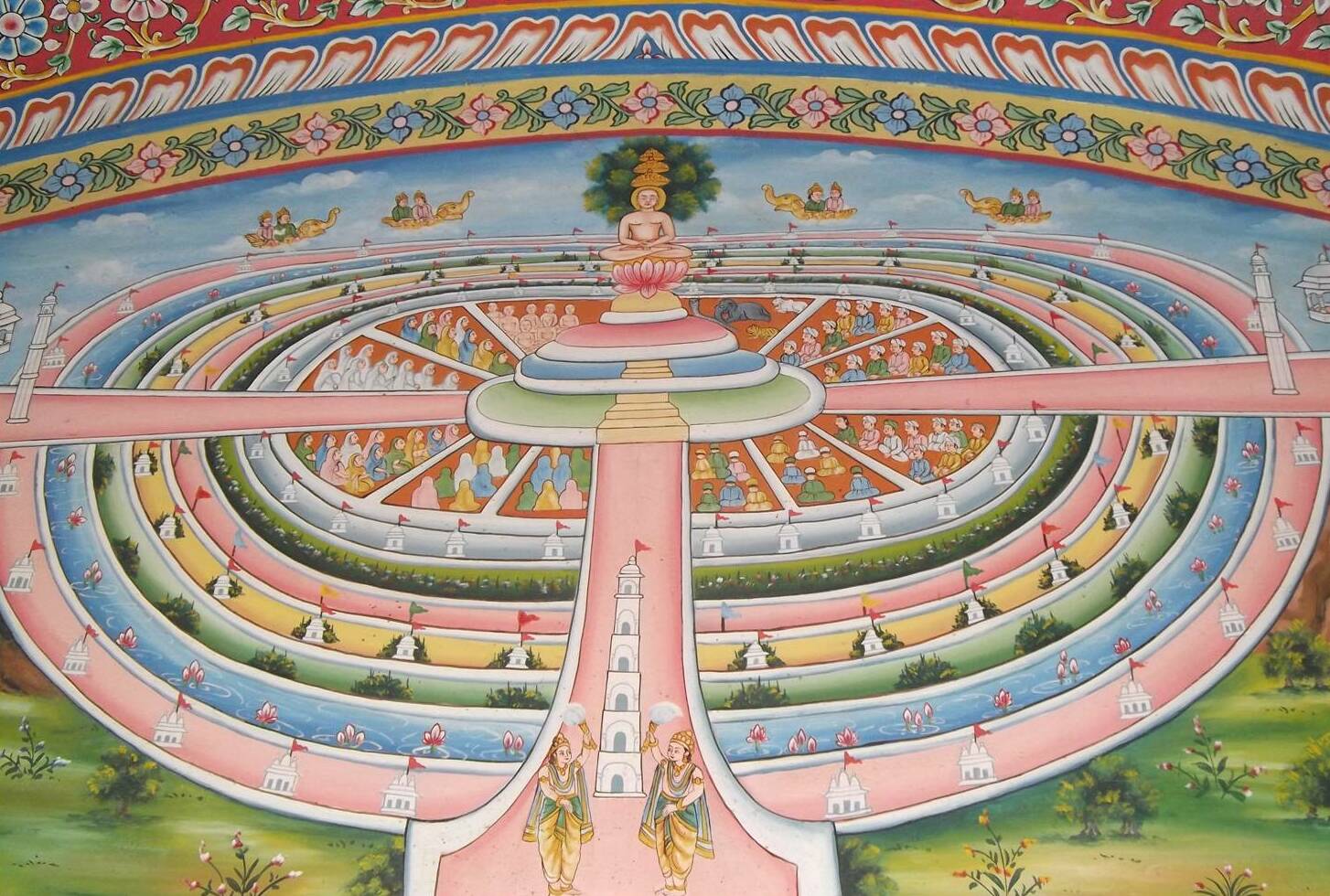|
Kumbharia Mahavira Temple
The Kumbharia Jain temples is a group of five Jain temples in the Kumbhariya, Banaskantha district in Gujarat, India. Constructed from 1062 to 1231 CE during the reign of the Chaulukya dynasty, they are noted for their elaborate architecture. History Kumbharia was one of the most important Jain centres during the Chaulukya period. It is said that 360 temples existed in the region during the 4th century, but most were destroyed by volcanic activity and only five remain . These five Jain temples were constructed from 1062 to 1231 CE: *Mahavira temple was built in 1062. This is the earliest Jain temple. *Shantinath temple was built in 1082. *Parshvanath temple was built in 1094 by the Chalukyan king Jayasimha Siddharaja. *Neminath temple was built a little later in 1136 during the reign of Jayasimha Siddharaja. *Sambhavanatha temple was built in 1231. It is however unlikely that volcanism has directly destroyed any temples as there has not been any evidence of active volcanoes ... [...More Info...] [...Related Items...] OR: [Wikipedia] [Google] [Baidu] |
Jainism
Jainism ( ), also known as Jain Dharma, is an Indian religions, Indian religion. Jainism traces its spiritual ideas and history through the succession of twenty-four tirthankaras (supreme preachers of ''Dharma''), with the first in the current time cycle being Rishabhadeva, whom the tradition holds to have lived millions of years ago, the twenty-third ''tirthankara'' Parshvanatha, whom historians date to the 9th century BCE, and the twenty-fourth ''tirthankara'' Mahāvīra, Mahavira, around 600 BCE. Jainism is considered to be an eternal ''dharma'' with the ''tirthankaras'' guiding every time cycle of the Jain cosmology, cosmology. The three main pillars of Jainism are ''Ahimsa in Jainism, ahiṃsā'' (non-violence), ''anekāntavāda'' (non-absolutism), and ''aparigraha'' (asceticism). Jain monks, after positioning themselves in the sublime state of soul consciousness, take five main vows: ''ahiṃsā'' (non-violence), ''satya'' (truth), ''Achourya, asteya'' (not stealing), ''b ... [...More Info...] [...Related Items...] OR: [Wikipedia] [Google] [Baidu] |
List Of Earthquakes In India
The Indian subcontinent has a history of earthquakes. The reason for the intensity and high frequency of earthquakes is the Indian plate driving into Asia at a rate of approximately 47 mm/year. The following is a list of major earthquakes which have occurred in India, including those with epicentres outside India that caused significant damage or casualties in the country. Earthquakes See also * Earthquake zones of India * Geology of India References Sources * Further reading * External links Earthquake Reports, India Meteorological Department (on line) {{Authority control Earthquakes in India, India geography-related lists, Earthquake Lists of earthquakes by country, India Lists of disasters in India, Earthquakes Tsunamis in India ... [...More Info...] [...Related Items...] OR: [Wikipedia] [Google] [Baidu] |
Parshvanatha
''Parshvanatha'' (), also known as ''Parshva'' () and ''Parasnath'', was the 23rd of 24 ''Tirthankaras'' (supreme preacher of dharma) of Jainism. He is the only Tirthankara who gained the title of ''Kalīkālkalpataru (Kalpavriksha in this "Kali Yuga").'' Parshvanatha is one of the earliest ''Tirthankaras'' who are acknowledged as historical figures. He was the earliest exponent of Karma philosophy in recorded history. The Jain sources place him between the 9th and 8th centuries BCE whereas historians consider that he lived in the 8th or 7th century BCE. Parshvanatha was born 273 years before Mahavira. He was the spiritual successor of 22nd tirthankara Neminatha. He is popularly seen as a propagator and reviver of Jainism. Parshvanatha attained moksha on Mount Sammeda ( Madhuban, Jharkhand) popular as Parasnath hill in the Ganges basin, an important Jain pilgrimage site. His iconography is notable for the serpent hood over his head, and his worship often includes Dharanendr ... [...More Info...] [...Related Items...] OR: [Wikipedia] [Google] [Baidu] |
Cardinal Direction
The four cardinal directions, or cardinal points, are the four main compass directions: north, east, south, and west, commonly denoted by their initials N, E, S, and W respectively. Relative to north, the directions east, south, and west are at 90 degree intervals in the clockwise direction. The ordinal directions (also called the intercardinal directions) are northeast (NE), southeast (SE), southwest (SW), and northwest (NW). The intermediate direction of every set of intercardinal and cardinal direction is called a secondary intercardinal direction. These eight shortest points in the compass rose shown to the right are: # West-northwest (WNW) # North-northwest (NNW) # North-northeast (NNE) # East-northeast (ENE) # East-southeast (ESE) # South-southeast (SSE) # South-southwest (SSW) # West-southwest (WSW) Points between the cardinal directions form the points of the compass. Arbitrary horizontal directions may be indicated by their azimuth angle value. Determination Addi ... [...More Info...] [...Related Items...] OR: [Wikipedia] [Google] [Baidu] |
Ashtapad
Mount Kailash (also Kailasa; ''Kangrinboqê'' or ''Gang Rinpoche''; Tibetan: གངས་རིན་པོ་ཆེ; ; sa, कैलास, ), is a mountain in the Ngari Prefecture, Tibet Autonomous Region of China. It has an altitude of . It lies in the Kailash Range (Gangdisê Mountains) of the Transhimalaya, in the western part of the Tibetan Plateau. Mount Kailash is less than 100 km towards the north from the western trijunction of the borders of China, India, and Nepal. Mount Kailash is located close to Lake Manasarovar and Lake Rakshastal. The sources of four major Asian rivers lie close to this mountain and the two lakes. These rivers are the Indus, the Sutlej, the Brahmaputra, and the Karnali (a tributary of the Ganges). Mount Kailash is considered sacred in four religions: Hinduism, Buddhism, Jainism and Bon. Etymology The mountain is known as “'” (; var. ' ) in Sanskrit. The name also could have been derived from the word “'” (), which means "crysta ... [...More Info...] [...Related Items...] OR: [Wikipedia] [Google] [Baidu] |
Rishabhanatha
Rishabhanatha, also ( sa, ऋषभदेव), Rishabhadeva, or Ikshvaku is the first (Supreme preacher) of Jainism and establisher of Ikshvaku dynasty. He was the first of twenty-four teachers in the present half-cycle of time in Jain cosmology, and called a "ford maker" because his teachings helped one across the sea of interminable rebirths and deaths. The legends depict him as having lived millions of years ago. He was the spiritual successor of Sampratti Bhagwan, the last Tirthankar of previous time cycle. He is also known as Ādinātha which translates into "First (''Adi'') Lord (''nātha'')", as well as Adishvara (first Jina), Yugadideva (first deva of the yuga), Prathamarajeshwara (first God-king), Ikshvaku and Nabheya (son of Nabhi). Along with Mahavira, Parshvanath, Neminath, and Shantinath; Rishabhanath is one of the five Tirthankaras that attract the most devotional worship among the Jains. According to traditional accounts, he was born to king Nabhi and q ... [...More Info...] [...Related Items...] OR: [Wikipedia] [Google] [Baidu] |
Samavasarana
In Jainism, Samavasarana or Samosharana ("Refuge to All") is the divine preaching hall of the Tirthankara, stated to have more than 20,000 stairs in it. The word ''samavasarana'' is derived from two words, ''sama'', meaning general and ''avasara'', meaning opportunity. It is an important feature in Jain art. The Samavasarana seems to have replaced the original Jain stupa as an object of worship. Samavasarana Hall In samavasarana hall, the ''tirthankara'' sits on a throne without touching it (about two inches above it). Around the tirthankara sit the ''ganadharas'' (chief disciples). Living beings sit in the following order: *In the first hall, ascetics *In the second hall, one class of deva ladies *In the third hall, ''aryikas'' (nuns) and laywomen *In the next three halls, three other classes of deva ladies *In the next four halls, the four classes of devas (heavenly beings) *Men, in the eleventh hall *Animals, in the last hall According to Jain texts, there would be four w ... [...More Info...] [...Related Items...] OR: [Wikipedia] [Google] [Baidu] |
Panch Kalyanaka
Panch Kalyanaka ( sa, pan̄ca kalyāṇaka, "Five Auspicious Events") are the five chief auspicious events that occur in the life of tirthankara in Jainism. They are commemorated as part of many Jain rituals and festivals. Kalyanaka These auspicious life events are as below: # Garbh kalyāṇaka: When the ātman (soul) of a tirthankara enter's their mother's womb. # Janma kalyāṇaka: Birth of the tirthankara. Janmabhisheka is a ritual celebrating this event in which Indra does abhisheka with 1008 Kalasha (holy vessels) on the tirthankara on Mount Meru. # Dīkṣā kalyāṇaka: When a tirthankara renounce all worldly possessions and becomes an ascetic. # Kēvalajñāna kalyāṇaka: The event when a tirthankara attains kēvalajñāna (absolute knowledge). A divine samavasarana (preaching hall) appears, from where the tirthankara delivers sermons and restores the Jain community and teachings. # Nirvāṇa kalyāṇaka: When a tirthankara leaves their mortal body, it is know ... [...More Info...] [...Related Items...] OR: [Wikipedia] [Google] [Baidu] |
Tirthankara
In Jainism, a ''Tirthankara'' (Sanskrit: '; English: literally a 'ford-maker') is a saviour and spiritual teacher of the ''dharma'' (righteous path). The word ''tirthankara'' signifies the founder of a '' tirtha'', which is a fordable passage across the sea of interminable births and deaths, the '' saṃsāra''. According to Jains, a ''Tirthankara'' is an individual who has conquered the ''saṃsāra'', the cycle of death and rebirth, on their own, and made a path for others to follow. After understanding the true nature of the self or soul, the ''Tīrthaṅkara'' attains '' Kevala Jnana'' (omniscience). Tirthankara provides a bridge for others to follow the new teacher from ''saṃsāra'' to ''moksha'' (liberation). In Jain cosmology, the wheel of time is divided in two halves, Utsarpiṇī' or ascending time cycle and ''avasarpiṇī'', the descending time cycle (said to be current now). In each half of the cosmic time cycle, exactly twenty-four ''tirthankaras'' grace thi ... [...More Info...] [...Related Items...] OR: [Wikipedia] [Google] [Baidu] |
Bahubali
Bahubali (), a much revered figure among Jains, was the son of Rishabadeva (the first ''tirthankara'' of Jainism) and the brother of Bharata Chakravartin. He is said to have meditated motionless for a year in a standing posture (''kayotsarga'') and that during this time, climbing plants grew around his legs. After his one year of meditation, Bahubali is said to have attained omniscience ('' Kevala Gyana''). Bahubali's other names are Kammateswara, Gommateshwara because of the Gommateshwara statue dedicated to him. Legends The '' Adipurana'', a 9th-century Sanskrit poem, deals with the ten lives of the first ''tirthankara'', Rishabhanatha and his two sons Bharata and Bahubali. It was composed by Jinasena, a ''Digambara monk''. Family life According to Jain texts, Bahubali was born to Rishabhanatha and Sunanda during the Ikshvaku dynasty in Ayodhya. He is said to have excelled in studying medicine, archery, floriculture, and the knowledge of precious gems. Bahubali had ... [...More Info...] [...Related Items...] OR: [Wikipedia] [Google] [Baidu] |
Kumbhariya Jain Temple - Ceiling (2) , a village near Ambaji
{{geodis ...
Several places are named Kumbhariya or Kumbharia in Gujarat, India. * Kumbhariya, Surat district, a village * Kumbharia, Kutch District, Gujarat a village near Anjar * Kumbhariya, Banaskantha district Kumbhariya is a village of historical, archaeological and religious importance with cultural heritage in Danta Taluka of Banaskantha district, Gujarat, India. It is notable for five medieval Jain temples, built between 1062 and 1231, similar ... [...More Info...] [...Related Items...] OR: [Wikipedia] [Google] [Baidu] |
.jpg)




